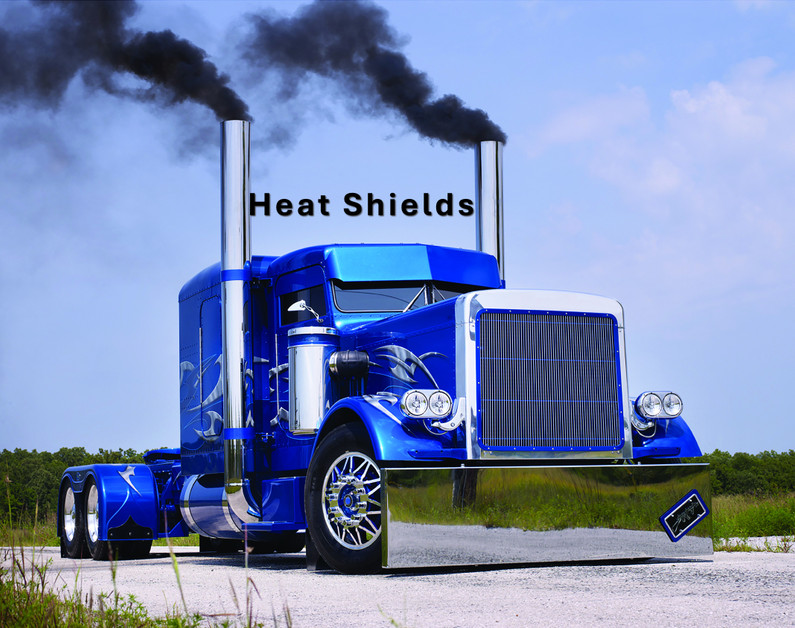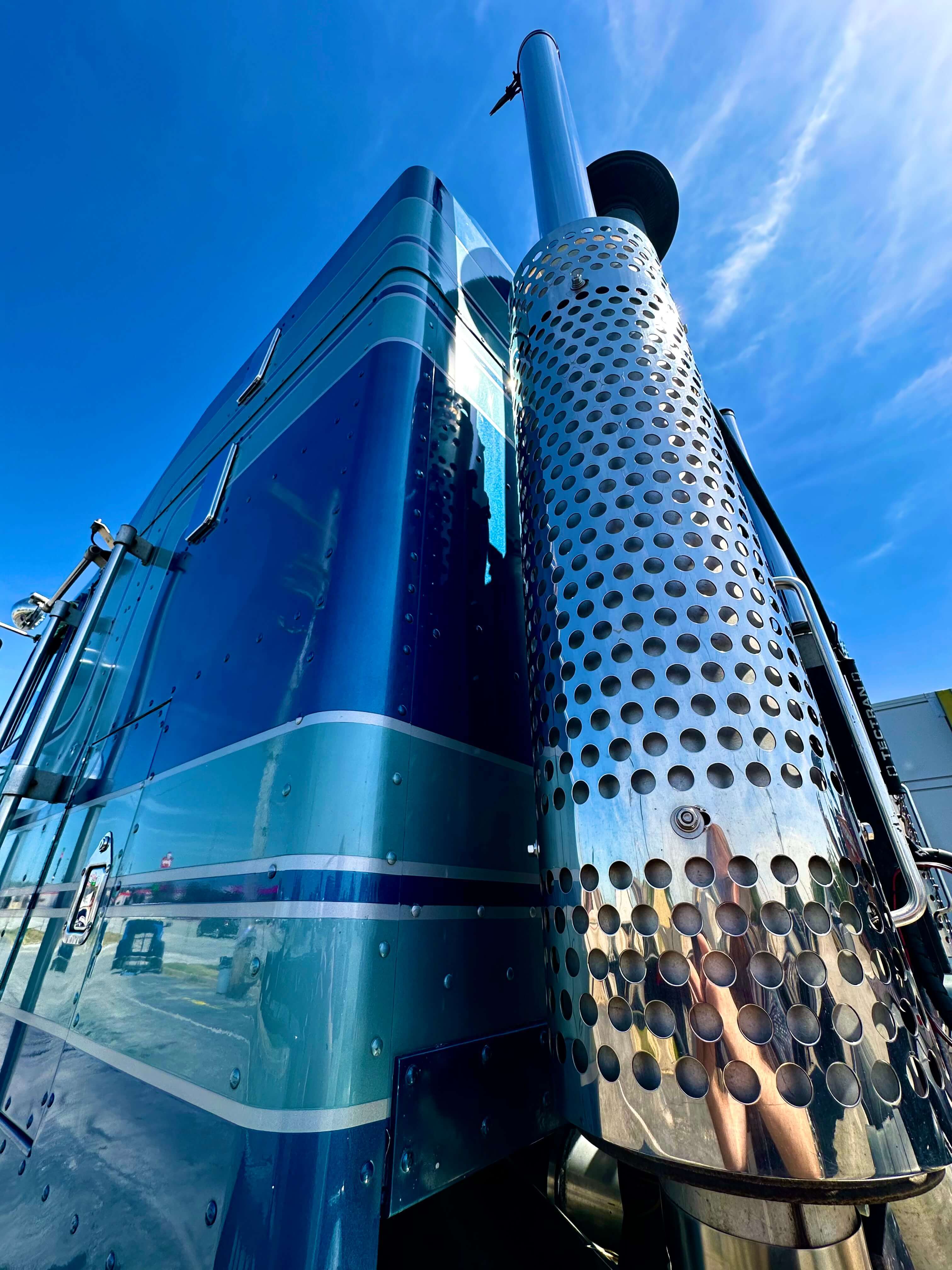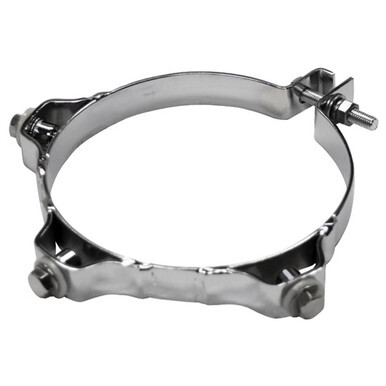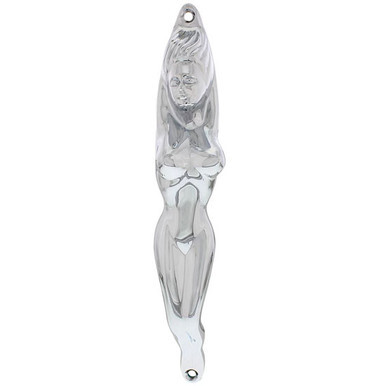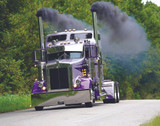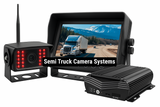Buyer’s Guide: Choosing the Right Semi Truck Heat Shield
A semi truck’s exhaust pipe heat shield is more than just some polished piece of metal.
It’s the only thing that stands between those searing hot exhaust fumes and your sleek-looking chrome, paint, and fuel tank end caps and straps.
If you’re looking for an in-depth guide to how to buy the best heat shield for your semi truck, this is it.
In this post, we’ll cover design options, the science behind heat shields, and the top-picks for your truck make/model.
Why Semi Truck Heat Shields are Necessary
Heat shields and wraps not only provide safety to the driver, but they also preserve the rig and add to the gleaming chrome to match up with your visors, grilles, and front bumper.
Aside from you, the shield can protect the following components:
- Air lines and hoses: can prevent softening, kinking, or bursting open from extreme heat
- Fuel lines: keeps diesel from overheating and reduces the risk of vapor lock
- Cab and sleeper insulation: prevents heat from radiating into the cab area
- Writing harness: prevents insulation from melting or cracking near exhaust sections
- Deters warping or damage from visors or mirror housings mounting near the exhaust stacks
- Reduces heat exposure to any nearby toolboxes or battery boxes
- Protects auxiliary marker lights from yellowing or deforming due to high temperatures
Oh, and they also just look cool.
They come in various perforated or slotted designs that can add to the aesthetic vibe of your rig. Or you can get a smooth chrome polished exhaust shield to overlay on your stack, blending in seamlessly.
Additionally, adding some grab handles (stack handles) offers a safety touch point. Catwalks and deck steps provide a safe way to inspect the rig or perform a hookup without coming into contact with hot surfaces.
Heat Shield Design Patterns
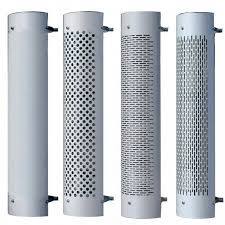
- Round hole – classic airflow & traditional chrome show look.
- Vertical slot – streamlined, modern aesthetic.
- Horizontal slot – rare, retro appeal.
- Custom laser-cut – branding, logos, names, and show-truck personalization.
What Semi Truck Heat Shields are Made Of
- 304 stainless – high corrosion resistance, best for long-term shine.
- 430 stainless – more affordable, slightly less corrosion resistance.
- Powder-coated steel – color customization and unique styling of a stainless steel heat shield; this is how some custom show trucks achieve a totally uniform blacked-out paint job.
Understanding Radiant Heat and Exhaust Stack Temps
The exhaust stack emanates radiant heat—a wave of invisible infrared energy you can feel just by standing near the exhaust pipes. It’s not just hot air, it's intense thermal radiation pouring off the steel.
304 stainless steel, the gold standard for premium stacks, holds up incredibly well.
But push it to 800 or 900°F, and you’ll start to see a subtle color shift—those familiar blue or golden hues that show where the heat lingers. In most modern trucks, though, the outer stack temperature hovers closer to 500°F, depending on the engine and model year.
In the past, trucks used double-walled stacks to help cool the exhaust gases. With modern aftertreatment systems handling much of that job now, double walls have mostly gone the way of the CB antenna—useful once, but no longer essential.
Drop to 430 stainless steel, and it shows its limits sooner. The metal starts to discolor at 700°F. High temps can easily crack or flake chrome-plated steel, which is why exhaust stacks always come in stainless steel material.
Heat doesn’t stop at the stack, though. Automotive paint starts softening around 250–300°F, which can lead to blistering or peeling near the exhaust path. Rubber fuel lines and seals begin to fail around 200–250°F, and plastic marker light lenses start warping in that same temperature range.
That’s the real reason heat shields matter—they’re not just for looks. They protect every part of your truck that wasn’t built to live in that kind of heat.
Heat shields offer:
- Reflectivity: the polished stainless steel reflects the radiation away from the surface
- Air Gap Cooling: the shields standoff design allows the air to pass between the shield and the exhaust decreasing heat before it reaches surrounding objects
- Patterned surfaces: perforated or slotted parts allow hot air to escape and cooler surrounding air to circulate through.
- Air gaps: why spacing between the shield and stack matters for radiant heat dissipation.
- Perforation patterns: moderate airflow benefits and cooling efficiency.
How to Choose the Right Heat Shield for Style & Truck Cohesion
You can get a 270 or 180 degree heat shield - which is just the difference in how they wrap around the exhaust pipe.
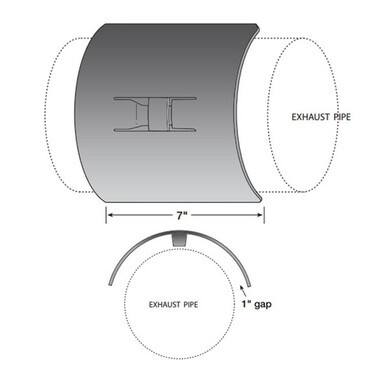
here is no performance difference between these two products.
Matching chrome tone and polish with:
- Visors (drop visors, one-piece visors)
- Front grille bars
- Fuel tank strap covers
You can also choose a finish type to help blend with the rest of your truck’s exterior.
Brackets & Clamps: Stability and Fitment
How Clamp Diameter Affects Fitment
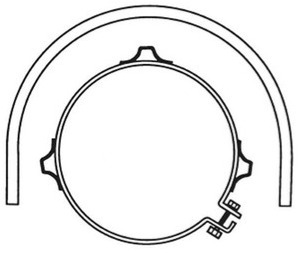
Common diameters include: 5”, 6”, 7”, 8”, 9”, and 10” diameters.
Clamp size has to match the outer diameter of the stack or muffler body for a stable, rattle-free fit.
If the clamp is even ¼” too big, the shield can still vibrate, and even pinch the chrome stack finish underneath.
Universal-fit shields include an adjustable or slotted set of clamps that give ½” flexibility to accommodate different manufacturers.
Bolt-On Brackets
These feature fixed mounting plates and bolts that attach directly to the stack or bracket arms.
It’s ideal for 270 degree shields or taller 60” muffler guards.
Wrap-Around Clamps
This is a popular band-style clamp that wraps completely around the pipe and tightens with the hex bolt or worm gear.
These are easy to install and require no drilling. Crafted in 304 stainless steel by brands like Lincoln Chrome, Roadworks, and Grand Rock.
Quick-Release Clamps
Uses a spring or latch mechanism for tool-free removal. It’s designed for easy service or swap-outs. It’s a great choice if you want to quickly remove it for maintenance or detailing.
Heat Shield Grab Handles
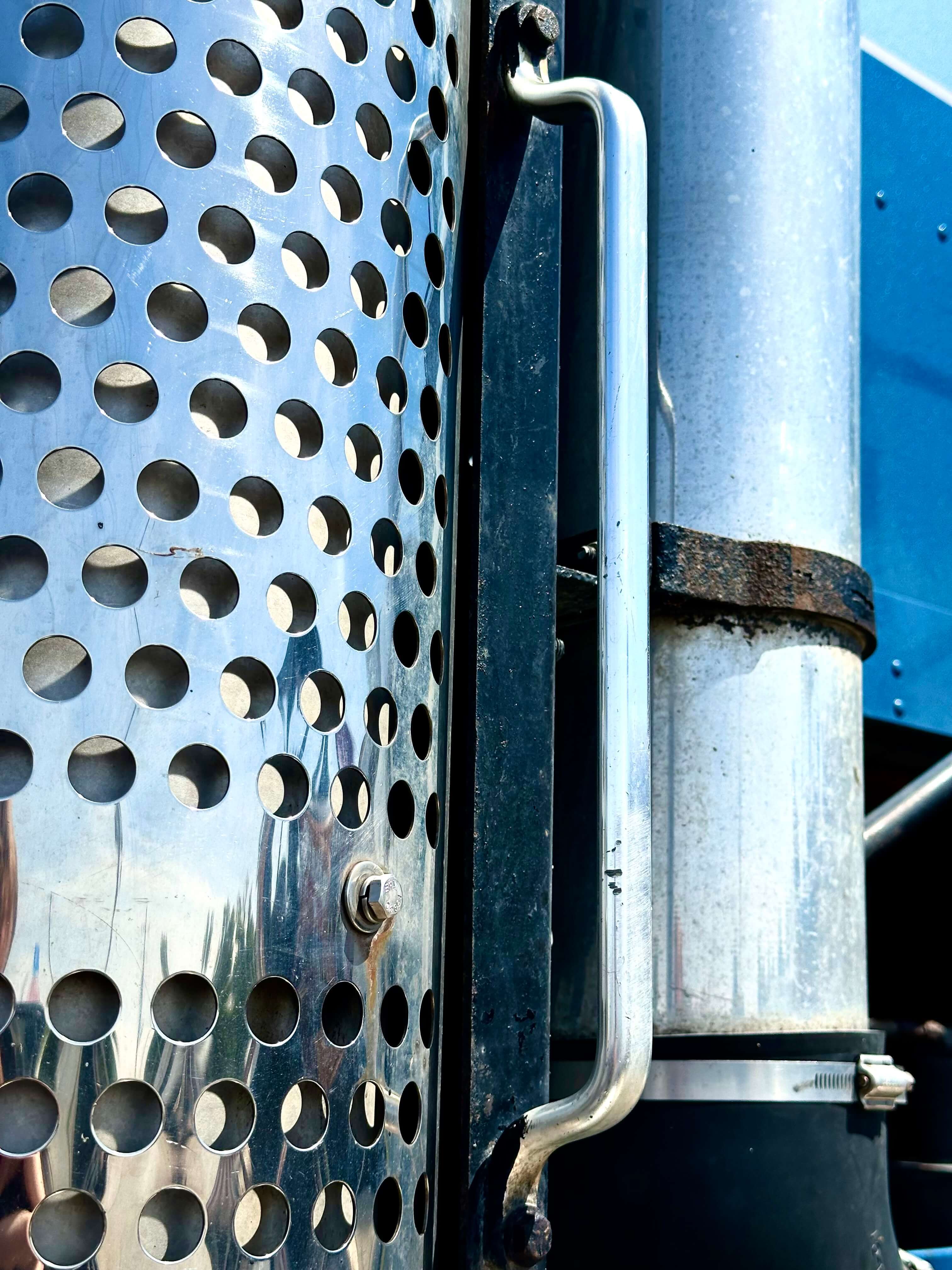
These are an obvious must-have add-on to your heat shield.
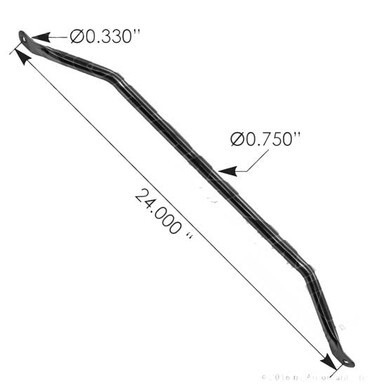
The size of your grab handle comes down to preference and what feels comfortable.
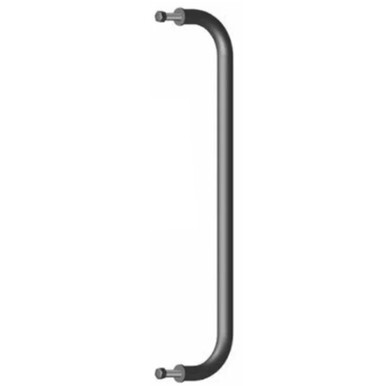
Some drivers prefer a short-length handle, whereas other drivers like an extended handle.
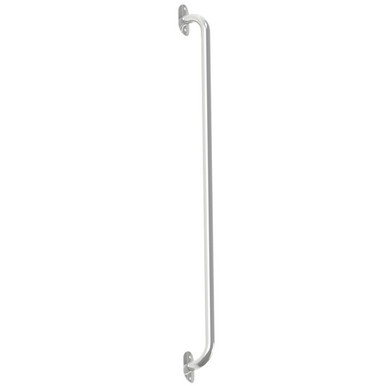
You can also customize your grab handle, either by doing some high-priced fab-shop work or getting a unique aftermarket design.
Do Semi Truck Heat Shields Affect Exhaust Flow Performance?
Heat shields have zero impact on exhaust flow.
The indirect benefits of just having a heat shield, however, include: cooler surrounding components and, therefore, a longer lifespan of wiring/hoses.
Are Custom Fabricated Heat Shields Worth It?
Sure. It’s great if you're adamant about branding and personalization. You can laser the company name on it. Add a well-housed LED backlight inside of the shield to light up the writing - etc.
Pros: one-of-a-kind style, branding opportunity, perfect fit.
Cons: higher cost, longer lead times, possible warranty implications.
Find Semi Truck Heat Shields by Truck Make/Model
Peterbilt Exhaust Parts (Heat Shields, Grab Handles & Clamps)
Kenworth Exhaust Parts (Heat Shields, Grab Handles & Clamps)
Frieghtliner Exhaust Parts (Heat Shields, Grab Handles & Clamps)
Universal fit: adjustable clamp 48"–60" stainless round-hole shield.
Shop for Heat Shields, Grab Handles & Accessories at 4 State Trucks
Completely upgrade your big rig with premium aftermarket parts and accessories designed to boost performance or achieve the perfect look. Download the 4 State App for on-the-go, convenient shopping.
Recent Posts
-
Semi Truck Muffler Guide
Need to lower your exhaust and engine noise, but aren’t sure what muffler to get? We offer Pittsburg …5th Dec 2025 -
Custom Underglow Light Setups on Semi Trucks
If you're looking for a way to dramatically enhance the look and presence of your semi truck at nigh …28th Nov 2025 -
Common Myths and Mistakes When Buying Aftermarket Semi Truck Parts (Ultimate Guide)
Cost, convenience, and make/model fitment are the top priorities when it comes to buying aftermarket …18th Nov 2025 -
Haul of Fame: Tony's Custom Retro W900 Kenworth
Tony Huttenstine is a seasoned owner-operator. Over the years, he has poured enormous time, money, a …14th Nov 2025 -
The 13 Best Christmas Gift Ideas for Truckers
Some of the best gifts for truck drivers are accessories that help make their job easier. Truckers s …11th Nov 2025 -
Best Semi Truck Camera Systems (Buyer's Guide)
Backup cameras can be a downright lifesaving accessory for truck drivers. But with countless commerc …7th Nov 2025 -
The 85-Year History of Peterbilt Trucks (Quickly Summarized)
Peterbilt: A Legendary Name in American Trucking A fast, engaging history—from WWII logging ingen …31st Oct 2025 -
The Best Steering Wheel Spinner Knobs for 2025
It's a small, affordable accessory that drivers love. Yup. We're talking about semi truck spinner kn …24th Oct 2025 -
Top 10 Semi Truck Winter Accessories for Heavy-Duty Drivers
Winter truck driving can be downright trecherous to work in, especially when you don't have the righ …21st Oct 2025 -
Haul of Fame: The Murder Pete Truck
They call it the Murder Pete. Blacked-out, rugged, and raw, it’s a notorious big rig known for its “ …17th Oct 2025


